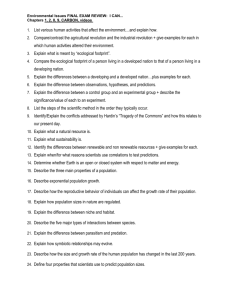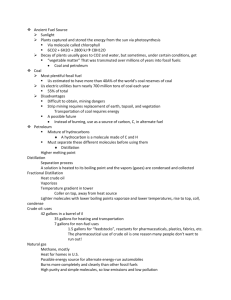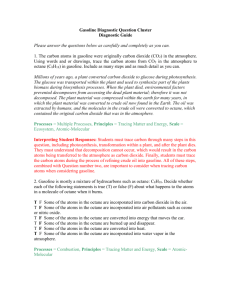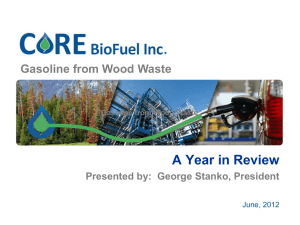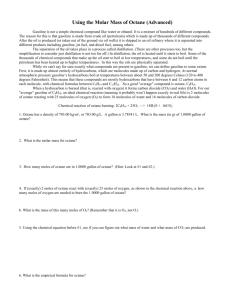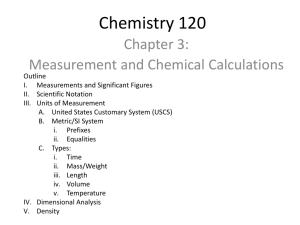Gasoline DQC
advertisement
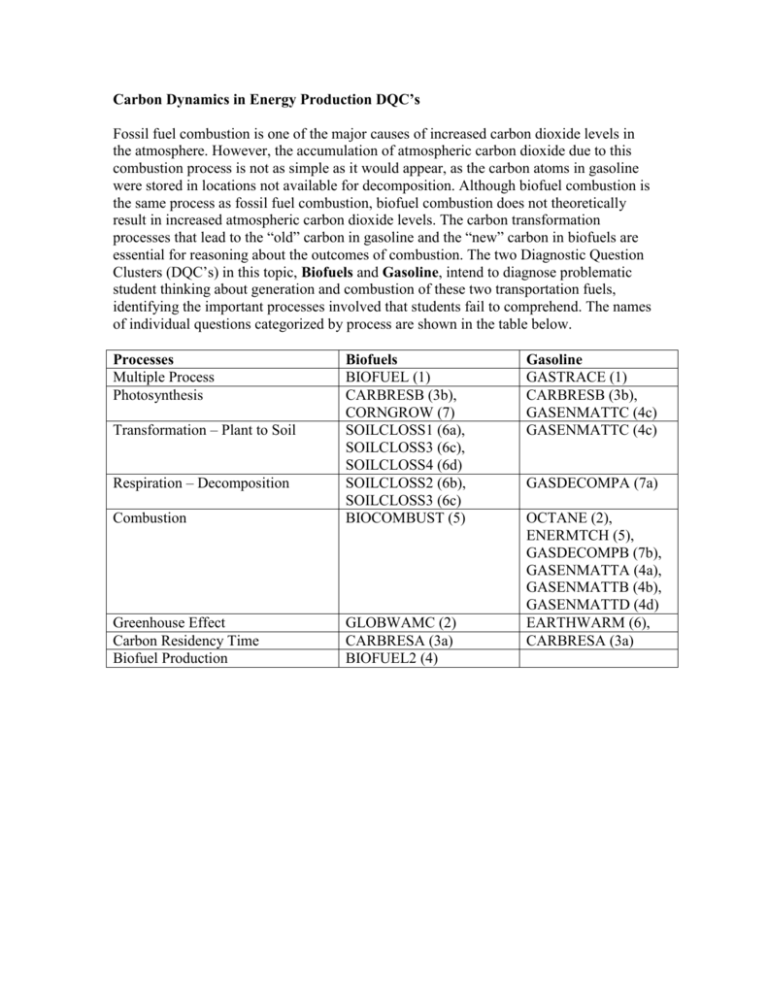
Carbon Dynamics in Energy Production DQC’s Fossil fuel combustion is one of the major causes of increased carbon dioxide levels in the atmosphere. However, the accumulation of atmospheric carbon dioxide due to this combustion process is not as simple as it would appear, as the carbon atoms in gasoline were stored in locations not available for decomposition. Although biofuel combustion is the same process as fossil fuel combustion, biofuel combustion does not theoretically result in increased atmospheric carbon dioxide levels. The carbon transformation processes that lead to the “old” carbon in gasoline and the “new” carbon in biofuels are essential for reasoning about the outcomes of combustion. The two Diagnostic Question Clusters (DQC’s) in this topic, Biofuels and Gasoline, intend to diagnose problematic student thinking about generation and combustion of these two transportation fuels, identifying the important processes involved that students fail to comprehend. The names of individual questions categorized by process are shown in the table below. Processes Multiple Process Photosynthesis Combustion Biofuels BIOFUEL (1) CARBRESB (3b), CORNGROW (7) SOILCLOSS1 (6a), SOILCLOSS3 (6c), SOILCLOSS4 (6d) SOILCLOSS2 (6b), SOILCLOSS3 (6c) BIOCOMBUST (5) Greenhouse Effect Carbon Residency Time Biofuel Production GLOBWAMC (2) CARBRESA (3a) BIOFUEL2 (4) Transformation – Plant to Soil Respiration – Decomposition Gasoline GASTRACE (1) CARBRESB (3b), GASENMATTC (4c) GASENMATTC (4c) GASDECOMPA (7a) OCTANE (2), ENERMTCH (5), GASDECOMPB (7b), GASENMATTA (4a), GASENMATTB (4b), GASENMATTD (4d) EARTHWARM (6), CARBRESA (3a) Gasoline Diagnostic Question Cluster Please answer the questions below as carefully and completely as you can. 1. The carbon atoms in gasoline were originally carbon dioxide (CO2) in the atmosphere. Using words and or drawings, trace the carbon atoms from CO 2 in the atmosphere to octane (C8H18) in gasoline. Include as many steps and as much detail as you can. 2. Gasoline is mostly a mixture of hydrocarbons such as octane: C8H18. Decide whether each of the following statements is true (T) or false (F) about what happens to the atoms in a molecule of octane when it burns. T F Some of the atoms in the octane are incorporated into carbon dioxide in the air. T F Some of the atoms in the octane are incorporated into air pollutants such as ozone or nitric oxide. T F Some of the atoms in the octane are converted into energy that moves the car. T F Some of the atoms in the octane are burned up and disappear. T F Some of the atoms in the octane are converted into heat. T F Some of the atoms in the octane are incorporated into water vapor in the atmosphere. 3a. On average, how long do you think a molecule of carbon dioxide remains in the atmosphere after being released by a human being? 3b. After a period of time, the carbon atom released by a human being will leave the atmosphere. Where does the carbon atom go when it leaves the atmosphere? 4a. When you are riding in a car, the car burns gasoline to make it run. Eventually the gasoline tank becomes empty. What happened to the matter the gasoline was made of? 4b. When the gasoline tank became empty and the car stopped, where did the energy of gasoline go? 4c. What was the ultimate source of energy for the gasoline? 4d. Do cars need air in order to run? Yes / No Please explain your answer. 5. When a match burns the energy released A) comes mainly from the match. B) comes mainly from the air. C) is created by the fire. D) comes from the energy that you used to strike the match. E) none of the above Please explain your answer. 6. The atmosphere's ability to keep the surface of the earth warm is caused by the ... A) seasons. B) greenhouse effect. C) ozone layer. D) wind. E) Responses B. and C. are correct. 7a. Scientists have discovered several microorganisms that are able to decompose gasoline. What happens to the carbon atoms in the gasoline during decomposition? 7b. Do the carbon atoms following decomposition by microorganisms end up in a different location than if the gasoline was burned in a car? Circle Yes or No. Please explain your answer.

